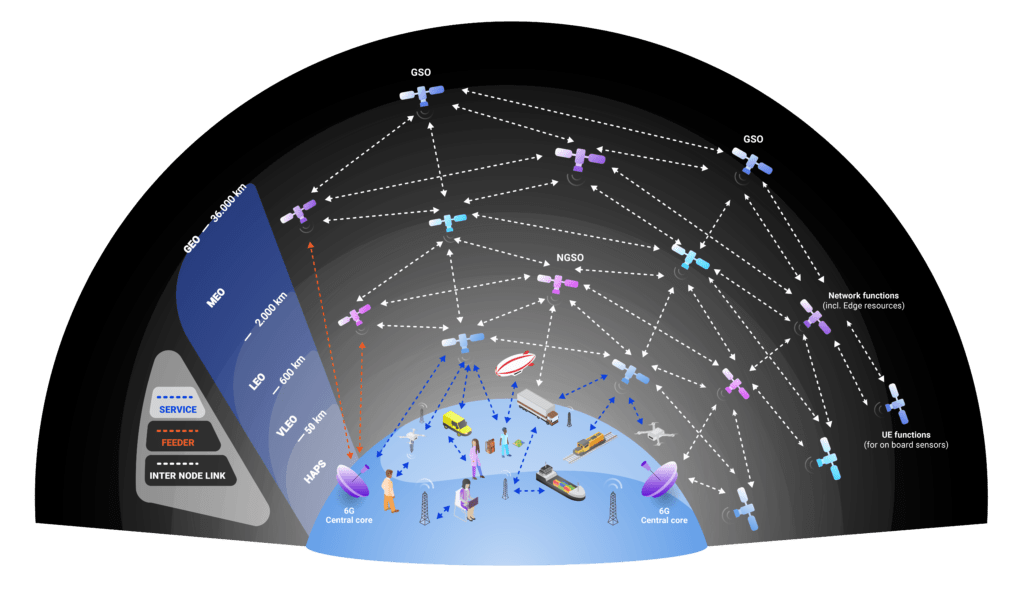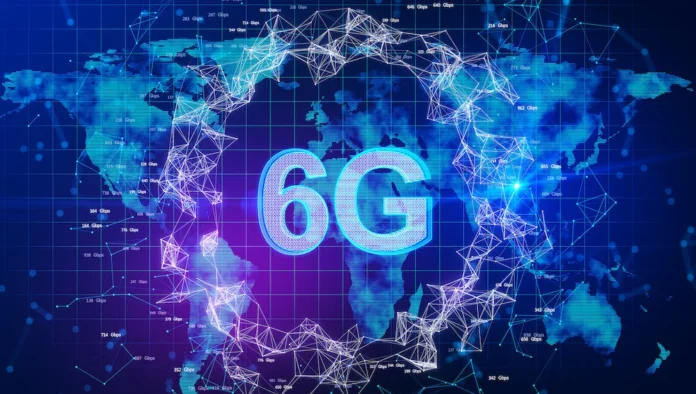Certainly, 6G is not only different due to the transition from its predecessor, 5G, but has a seismic impact on how the human being interacts with technology, processes information, and experiences its connectivity. While the world is still deploying 5G, its revolutionary potential is one to watch. Debate on 6G, the next generation of wireless communications, is already rife. But what will the future of wireless communications supposed to be? Let’s explore more about it.
1. Unprecedented Data Speeds and Low Latency
Terabit: 1 Tbps-this 6th generation is anticipation of speeds which are 1,000 times faster than the maximum gigabit speeds of the 5th. Viewed from the perspective, it allows a user to download the data of 100 movies with less than one second. Latency, on the other hand, was indicated at the level of microseconds, affording almost real-time interactions, something that has always been too far-fetched.
This ultra-low latency will surely have an effect in areas where you really need milliseconds or even fractions of milliseconds, e.g. autonomous self-driving cars, remote surgeries, and AR gaming.
2. AI and the New Network Principle
To be integrated with artificial intelligence (AI) and machine learning, the 6G network will form intelligent connections, which are also called “intelligent connectivity.” AI will determine at each moment the most appropriate allocation of resources to respond to the infrastructure demand. It actually means that users will now have a cleaver, helping network anticipate needs, solve issues, and make operations more efficient. For instance, a smart city in the future will be able to run on its own, managing energy grids, optimizing traffic systems, and ensuring public safety with the help of 6G.
3. Eeality Extended
The access of everybody to the almost-real world via virtual realities, Augmented Realities, and probably, with MR, will be the trademark of the 6G spectrum. Through this technological progress, reality with almost no distinguishable characteristics from a real meeting would be created as holographic avatars correspond in a shared virtual space of meeting rooms out of history through the living room of people in their dwellings.
4. IoT on a Massive Expansion: Get Ready!
Heavily impacted by 6G will be the Internet of Things (IoT). Today’s IoT deployments suffer from limitations of bandwidth and latency. The first historic feature of 6G tells us that it will be able to establish hyper-connected environments, 1 million devices per square kilometer. This kind of enhancement will modernize the areas of smart homes, industrial automation, agriculture, and healthcare.
For instance, farmers will put up millions of small sensors over huge land areas, which monitors in real time soil condition, crop health, and weather.
5. Healthcare Revolutionized
Now we could procure surgical operations, health monitoring, and diagnostics, done precisely and reliably, as from the distance of a haptic feedback and real-time data transfer. Surgeons would be able to operate patients situated several thousand miles away. Wearables and implanted sensors on 6G can incessantly monitor vital activities, mark anomalies, and alert healthcare providers of emergencies, thus saving lives.

6. Universal Coverage and Connectivity
However, 6G will cover the global distance. It can easily disable all disadvantages that are remote and rural for 5G. 6G has understood that satellite constellations will cover rural areas and also that their geographical features will be extensively augmented by terrestrial networks and high-altitude platforms. This ready umbilical link will ensure that even remote communities are connected.
7. Sustainability and Energy Efficiency
Sustainability features are now being incorporated in creating 6G networks due to the expected increases in this area. Technologies like energy harvesting can now be used in providing electricity needs of devices from environmental sources, amongst other potential applications. Furthermore, the use of AI in network-optimization activities reduces consumption of energy by ensuring fitted use of resources. These harmonize with global efforts towards climate change by reducing digital infrastructure carbon footprints.
8. Quantum Communication and Security
6G is thought to contain quantum communication technologies that have promises of data security in new magnitudes. Cybercriminals should not bother with quantum encryption, for example, when they intercept data because of the high security of quantum data. This is extremely important. As more vital activities, such as financial networks and governmental operations, become digitized, organizations need to be secure.
9. Digital Twins and the Future
6G will enable digital twins at a scale never-before-fathomed for industries. Digital twins are identical, virtual forms of the original physical object, system, or environment created in a computer. The industry can thus use rapid, real-time data coming into the twin to form dynamic simulations to test, optimize, and predict maintenance. For example, a manufacturing could produce a dynamic virtual factory floor to detect inefficiencies long before the impact on real production would be felt.

10. The Challenges and Factors
This technology has problems, but the anticipation is one that could offer a new era. Such a facility to have a massive infrastructure construction would need investment, innovation, and collaboration. Meanwhile, critical conversations are taking place regarding data security and privacy, together with bumps from ethics-related AI use to create trust in the technology. Regulatory frameworks put in place are crucial in managing spectrum allocation and ensuring fairness in accessing it.
Conclusion
6G technology has such powers that it ought to overhaul the conventional meanings of connectivity and innovation. With speeds that reach beyond a million miles an hour and latency that is incredibly low, the development of 6G promises greater security in the arena of future intelligent networks and the realization of its residents through advances in extended reality.
China’s Strategic Push for 6G: Government and Industry Collaboration Read More




This blog is a fantastic read for anyone interested in the future of wireless connectivity! I’ve been following 5G advancements closely, but 6G is a whole different level. The way the article explains how 6G will impact not only faster internet speeds but also industries like autonomous driving, healthcare, and smart cities was eye-opening. The potential of holographic communication and ultra-low latency seems like science fiction, but the blog presents it in a way that feels very possible. Exciting times ahead for tech!
Hi,
Can we mention jazzcybershield.com in our blog post?
Please review our blog post in below URL and give us feedback. Thank you,
https://parcian.org/business-online
This article blew my mind! I had no idea 6G could impact everything from smart cities to healthcare. Super insightful read—can’t wait to see it in action.